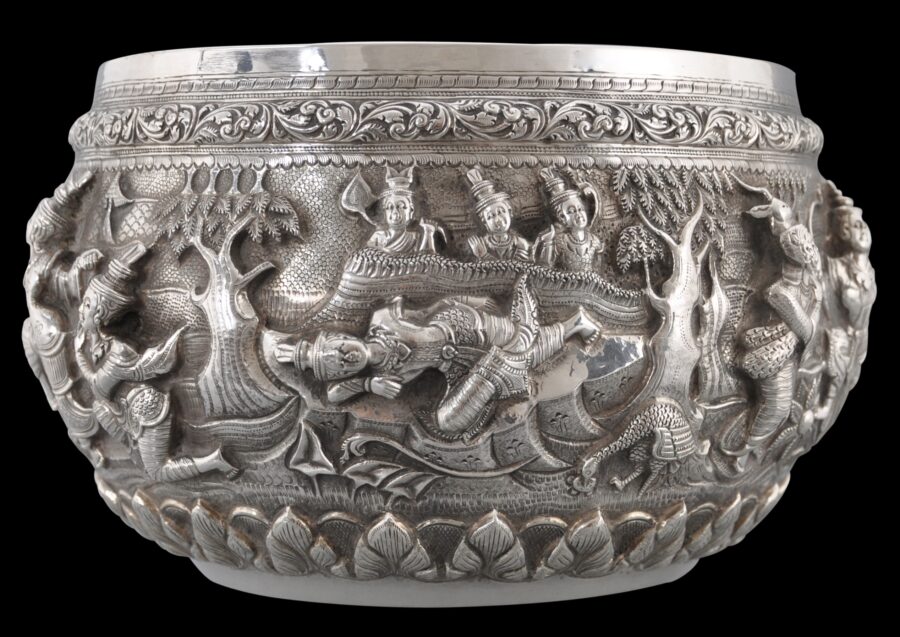This Burmese bowl (thabiek) is repoussed and chased in particularly high relief with various panels of scenes of multiple figures in Burmese dress, all in high relief. The scenes all draw on the Burmese version of the Indian Ramayana epic – known in Burma as the Yama Zatdaw – all within upper and lower borders of leafy scrolling.
Included are scenes such as Sita being abducted by Dasagiri in his flying chariot; Rama winning the hand of Sita in an archery competition; the death of King Dasaratha, where in this case, the king is shown laying prostrate with his head being in particularly high relief.
The base is plain.
Bowls such as these were modelled by Burmese silversmiths for the colonial market. Their form is based on the lacquer begging bowls used by Burmese monks, but silver bowls such as the example here, were never used by monks, although occasionally they might have been donated to a monastery as an act of merit on the part of a devotee.
The bowl is in an excellent condition.
References
Fraser-Lu, S., Silverware of South-East Asia, Oxford University Press, 1989.
Fraser-Lu, S., Burmese Crafts: Past and Present, Oxford University Press, 1994.
Owens, D.C., Burmese Silver Art: Masterpieces Illuminating Buddhist, Hindu and Mythological Stories of Purpose and Wisdom, Marshall Cavendish Editions, 2020.
Tilly, H.L., The Silverwork of Burma (with Photographs by P. Klier), The Superintendent, Government Printing, 1902.
Tilly, H.L., Modern Burmese Silverwork (with Photographs by P. Klier), The Superintendent, Government Printing, 1904.








